MOOKIE, A CHILD BRIDE & A PET HORSE
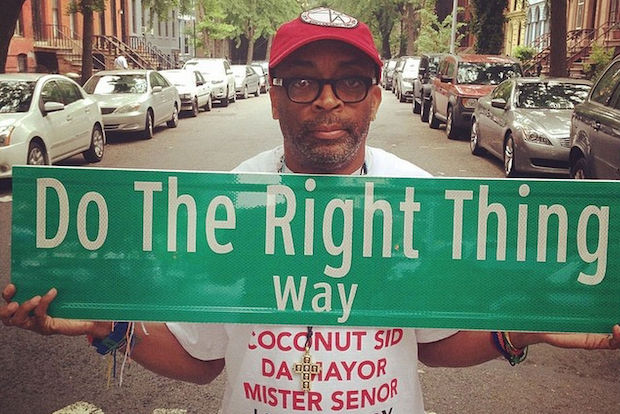
Brownstone Detectives investigates the history of our clients’ homes.
The story you are about to read was composed from research conducted in the course of one of those investigations.
Do you know the history of YOUR house?
********************************************************************************************************************************
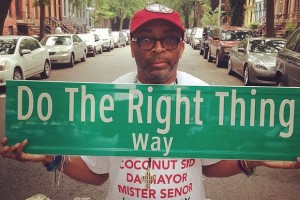
Not much exciting took place at 173 Stuyvesant Avenue throughout its 140+ year history – unless you count 1) Spike Lee’s movie, “Do The Right Thing,” 2) a pet horse, or 3) a child bride.
MOOKIE’S CRIB
The brownstone where director Spike Lee’s character “Mookie” lived in the 1989 movie, “Do The Right Thing,” 173 Stuyvesant Avenue sits at the corner of Quincy Street.
Filmed at various additional locations in Bedford-Stuyvesant – but mostly on Stuyvesant Avenue – “Do The Right Thing” was a commercial success that featured the debuts of Martin Lawrence and Rosie Perez.
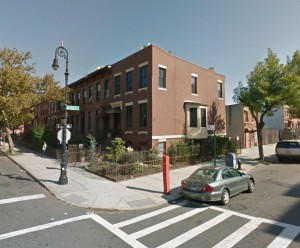
A few years back, Spike Lee was in the news not only for his vilification of his old neighborhood’s “gentrifiers,” but also for his own request for a change in Bedford-Stuyvesant.
Lee saw that change after he lobbied to have Stuyvesant Avenue – between Lexington Avenue And Quincy Street – renamed “Do The Right Thing Way.”
YES, VIRGINIA, THERE WAS A HISTORY BEFORE SPIKE LEE
Built at some point before 1877, it was listed for rent that year as a “partially furnished,” “two story basement brown stone house.”
The owners included a rather interestingly worded phrase in this ad in the Brooklyn Daily Eagle, stating that they were willing to “let the whole or part of the house,” or to “give the rent and some money for board, to a good family.”
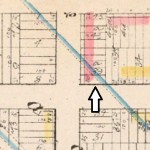
Either the owners did not plan to actually give money to their future renters, or they were very happy to have a “good family” take care of the house in their absence. Unfortunately, as this wording was not commonly used, their true intent is unclear to us.
In 1885, the house, listed as a “2s and b br s, 10r” (2-story and basement brownstone, 10 rooms), was being rented by the month for $35. (Twelve-room houses were going for $40, while 8-room houses fetched $25.)
At some point within the next 10-15 years, a 2-story brick stable was built at the back of the property. This allowed the owners of the home to keep their own horses on the property as opposed to down the road at a stable.
In 1894, the house was being auctioned off as a “valuable corner property” that was “peculiarly adapted for a physician.” This may have meant that the bottom floor – or basement level – had been laid out or renovated to suit an office that could take patients, particularly a physician’s office.

By 1907, the occupants of the house were selling the “family pet horse,” along with its harness and runabout. The owners must have been of a higher class since they referred to their form of transportation as a family pet.
In 1911, legal action was taken with regards to 173 Stuyvesant. It isn’t clear why it occured, but it was likely that a divorce or a death created a situation that made continued ownership of the house – by the then-current owners – impossible.
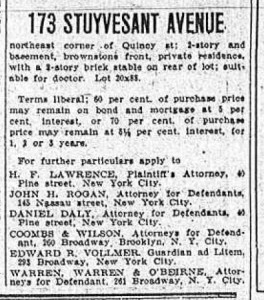
For this reason, one of the owners filed for a “partition by sale,” which took the decision of “who got what” out of the hands of the owners. The house was then put up for auction and the proceeds from the sale were divided equitably among them.
Over the years the house was let and sold a number of times. In 1914, it was the home of a family whose son married and divorced a “child bride.”
Frederick D. Barnes, 21, had met a 16-year-old girl, Gertrude Barnes of 412 State Street, at a party in 1913, and both agreed at that time that “it would be nice to get married.” They soon married secretly, and then they informed their families of the arrangement.
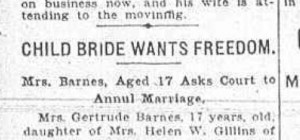
After two weeks of living together, “Fred wanted to go back home to mother.” A separation was “equally agreeable to the bride, so they parted.”
In 1925, an “Irish girl, lately landed” was looking for a position as a “general houseworker.” Likely a tenant, she encouraged someone to contact her in “care of Claus” (probably the owner).
Then a quarter of a century later, in 1951, Private First Class Robert Blakes, the son of Lizzie G. Watson, was listed as having been wounded in the Korean War.
It is here that the trail goes cold, until, well…Mookie.
———————————————————————————————————————–
 Brownstone Detectives is an historic property research agency. Our mission is to document and save the histories of our clients’ homes. From our research, we produce our celebrated House History Books and House History Reports. Contact us today to begin discovering the history of your home.
Brownstone Detectives is an historic property research agency. Our mission is to document and save the histories of our clients’ homes. From our research, we produce our celebrated House History Books and House History Reports. Contact us today to begin discovering the history of your home.